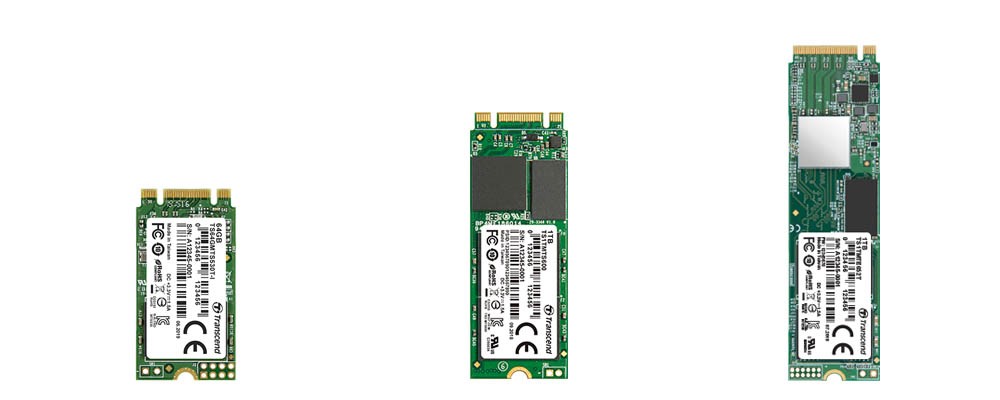In this article:
Understanding NVMe SSD Technology: Benefits of PCIe SSD Technology
This article compares traditional AHCI communication drivers with NVMe communication drivers, transfer speeds of SATA and PCIe data buses, PCIe SSD form factors available, and the overall benefits of adopting NVMe SSD technology.
NVMe SSDs are the latest adaptation to industrial computing. NVMe stands for Non-Volatile Memory Express and is the new communication interface and driver that defines a command set and feature set for PCIe-based SSDs with the goal of increased performance and interoperability on a broad range of industrial systems.
Comparing Transfer Speeds: SATA vs PCIe
PCIe data buses provide a significant increase in data transfer speeds vs the SATA data bus. Using 16 lanes, PCIe Gen 4 can transfer data at 32,000 MB/s.
|
Data Bus |
Generation |
Transfer Speeds |
|
SATA |
SATA I |
150 MB/s |
|
SATA II |
300 MB/s |
|
|
SATA III |
600 MB/s |
|
|
PCIe |
PCIe Gen 2 |
500 MB/s Per Lane |
|
PCIe Gen 3 |
1,000 MB/s Per Lane |
|
|
PCIe Gen 4 |
2,000 MB/s per Lane |
Comparing AHCI Communication Drivers with NVMe Communication Drivers
|
AHCI |
NVMe |
|
Designed for hard drives with spinning disk technology |
Designed for SSDs with flash technology |
|
Has only 1 command queue |
Has 64,000 comman queues |
|
Can only send 32 commands per queue |
Can send 64,000 commands per queue |
|
Commands utilize high CPU cycles |
Commands utilise low CPU cycles |
|
Has a latency of 6 microseconds |
Has a latency of 2.8 microseconds |
|
Must communicate with the SATA controller |
Communicates directly with the system CPU |
|
IOPS up to 100,000 |
IOPs over 1,000,000 |
What SSD Form Factors Are Available for SATA & PCIe Data Buses?
SSDs are available in a wide range of form factors utilising the SATA or PCIe data bus. Industrial mini PCs are beginning to adopt M.2 storage with either the SATA or PCIe data bus. Available in three dimensions, an M.2 SSDs size can typically deduced from the cards name – 2242, 2260, and 2280. The first two digits represent the M.2 cards width in mm whereas the latter two digits represent the M.2 cards length in mm. The longer the M.2 SSD cards have more storage capacity due to the ability to host more NAND flash chips. The picture below shows Transcend M.2 SSDs in different lengths.

When choosing the right length M.2 SSD you must first consider how many SSDs will be installed into the industrial computer and how this will affect thermal management as this is a significant factor for sustaining performance. Instability and reduced life are a side effect if the industrial computer cannot effectively dissipate the additional heat.
|
Data Bus |
SSD Form Factor |
|
SATA |
2.5” SSD |
|
mSATA SSD |
|
|
M.2 SSD |
|
|
PCIe |
HHHL SSD – Half Height, Half Length * |
|
M.2 SSD |
|
|
U.2 SSD |
*AHCI versions of these drives plug into the PCIe slot but use the AHCI drivers. Some older versions of HHHL use proprietary drivers. NVMs versions typically use native OS drivers.
Benefits of NVMe Technology
Superior Storage: PCIe sockets transfer up 25x more data than their SATA equivalent
Superior Speed – NVMe begins sending commands more than 2x faster than AHCI drivers. NVMe Input/Output operations per second exceeds 1 million and is up to 900% faster than its AHCI equivalent.
Superior Compatibility – NVMe cuts out the middleman by communicating directly with the system CPU. NVMe-based drives work with all major operating systems, regardless of form factor.










